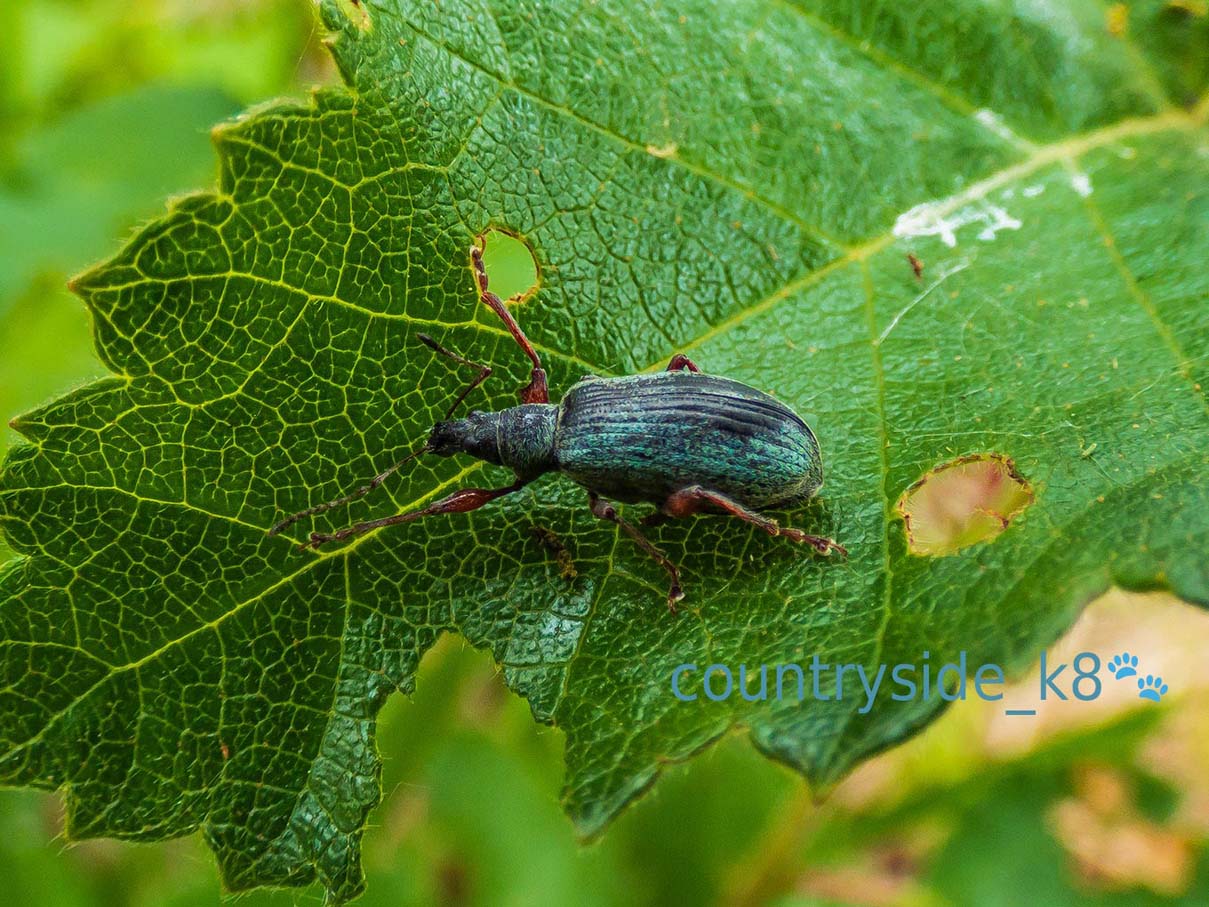
Polydrusus formosus (Broad-nosed Weevil)
Polydrusus formosus (Broad-nosed Weevil)
Latin name: Polydrusus formosus
Polydrusus formosus is a metallic green, Broad-nosed Weevil. It actually has a black body that is coated in emerald scales. When the scales wear off the dark body appears beneath. They have pale antennae with a dark club.
The adults eat young leaves and open blossoms of a wide variety of broadleaved trees and shrubs, including Oak and Common Hazel, but also various fruit trees. They are considered a pest of fruit trees and can cause extensive damage to buds, blossoms and shoots.
The adult weevils can be seen between April and August.
The female weevil lays her eggs in the bark or leaves of the host plant. The larvae live in soil and by Autumn their development is complete. They overwinter and pupate in Spring.
Polydrusus formosus are widespread in England. Previously they were very scarce, but their numbers are undergoing an increase.
Created: 1 October 2018 Edited: 1 October 2018
Mist, Mines and Ruins
Own label and private label building products
We produce, brand and supply for some of the biggest names in the industry. Read more...


